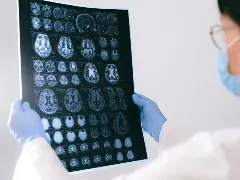

Every woman will experience menopause and its symptoms, though conditions that often arise, like urinary incontinence, are common but not normal. Urinary incontinence is a condition that usually occurs in adult women following pregnancy but is actually most prevalent during or after menopause due to the weakening of the pelvic floor or loss of vaginal elasticity. A recent Science Daily study reports urinary incontinence and overactive bladder syndrome (OAB) significantly increases for women in postmenopausal age. With the number of menopausal women worldwide estimated to reach 1.1 billion by 2025, women must understand now what treatments are available to combat incontinence.
When does incontinence normally take place?
Women are most likely to experience urinary incontinence during any type of hormonal change, such as puberty transition, pregnancy, postpartum, breastfeeding, perimenopause and menopause. If left untreated, incontinence can interfere with work, social life, exercise or sleep which can result in more serious complications down the road. Fortunately, there are many practices and exercises women can apply to their daily lives to help offset the prevalence of incontinence and how it impacts their overall wellbeing.
Exercise, train and strengthen pelvic floor muscles
An active lifestyle and moving your body, especially through exercises designed to target pelvic floor muscles, can help deal with incontinence issues. This can include contracting and relaxing the right muscles which will improve bladder strength. Kegel exercises are also very beneficial to do on an empty bladder. If you are having difficulty with the movements and techniques, seek guidance from your healthcare provider who can refer you to the right pelvic floor physical therapist.
Reduce fluid intake and manage dietary needs
Fluid intake and diet plays a huge role in one’s overall health, especially the bladder. What you put into your body influences bladder function. For example, whole-grains, fibrous foods, fruits and vegetables help bladder health. Whereas spicy food, alcohol, caffeine and dehydration can harm your body. Stay hydrated and avoid constipation, as this can place pressure on the pelvic floor, causing incontinence. Listen to your body when you need to void and if you feel that you are going to the restroom too frequently it is important to seek medical attention.
Use urinary incontinence products
Adult briefs, bladder control pads and other incontinence products can make managing your bladder much easier. These products can help prevent urine leakage during your everyday activities and will ultimately put your mind at ease. Other helpful items, especially to be used during physical activity, can include handheld urinals or a catheter, as they are convenient and do not hinder your day-to-day lifestyle, and instead allow you to focus on what matters to you most.
Maintaining a healthy and active lifestyle is the most important aspect when dealing with incontinence after menopause. There are other actions such as managing your diet and using incontinence products that significantly help with bladder health. Preventative and proactive approaches like having conversations with your medical provider before symptoms and conditions arise is always best. If you notice hot flashes, night sweat, anxiety, pelvic pain, vaginal dryness or other symptoms – these are common but not normal during the menopausal stage. As outlined, there are numerous steps you can take to help guide you through urinary incontinence, during the menopausal transition.








Comments
Post a Comment